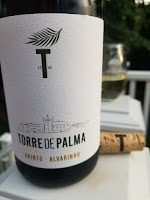 Winemaking has been an occupation in the Eastern European country of Moldova for the past seven thousand years starting with the Cucuteni-Trypillia culture – one of the oldest civilizations in Europe (6th – 4th centuries B.C.). Serious grape growing was introduced later by the Greeks and Romans and strengthened by the Christian monasteries during the Middle Ages. Winemaking halted for 300 years when the principality of Moldova was a vassal state to the Ottomans and was eventually reversed under the Soviets when the state became a leading supplier of cheap bulk wine to the rest of the USSR and satellite countries. Once independent in 1991, there have been public and private efforts to increase quality and become a tourist destination for European travelers.
Winemaking has been an occupation in the Eastern European country of Moldova for the past seven thousand years starting with the Cucuteni-Trypillia culture – one of the oldest civilizations in Europe (6th – 4th centuries B.C.). Serious grape growing was introduced later by the Greeks and Romans and strengthened by the Christian monasteries during the Middle Ages. Winemaking halted for 300 years when the principality of Moldova was a vassal state to the Ottomans and was eventually reversed under the Soviets when the state became a leading supplier of cheap bulk wine to the rest of the USSR and satellite countries. Once independent in 1991, there have been public and private efforts to increase quality and become a tourist destination for European travelers. The Moldovian landscape is quite moderate in regard to topography and extreme weather. Rolling hills provide sunlight and drainage while cool winters and warm summers rarely reach extreme levels that can damage vines or reduce fruit quality. Rainfall is also moderate, "completing a set of conditions almost perfectly suited to viticulture" (wine-searcher.com).
 There are four Protected Geographical Indication (PGI) designations in the country: Codru, Ștefan Vodă, Valul lui Traian, and Divin. Codru PGI is a wine designation that covers roughly the central third of the Republic of Moldova, stretching from the border with Romania to that with Ukraine on the other side of the country. This region shares many of the overall conditions in Moldova where the climate is temperate continental, with mild short winters and long warm summers. Vineyard altitudes range from 150 to 400 meters above sea level and the region is fragmented by a network of valleys, ravines, ridges, hills, and cliffs. The most common soils are dark chernozem. This is very fertile, with high levels of humus, phosphoric acids, phosphorus, and ammonia. It can produce high yields due to its water storage capacity. Chardonnay accounts for the largest plantings of white wine so it's no surprise that its Burgundy compatriot Pinot Noir is a widely planted red wine grape.
There are four Protected Geographical Indication (PGI) designations in the country: Codru, Ștefan Vodă, Valul lui Traian, and Divin. Codru PGI is a wine designation that covers roughly the central third of the Republic of Moldova, stretching from the border with Romania to that with Ukraine on the other side of the country. This region shares many of the overall conditions in Moldova where the climate is temperate continental, with mild short winters and long warm summers. Vineyard altitudes range from 150 to 400 meters above sea level and the region is fragmented by a network of valleys, ravines, ridges, hills, and cliffs. The most common soils are dark chernozem. This is very fertile, with high levels of humus, phosphoric acids, phosphorus, and ammonia. It can produce high yields due to its water storage capacity. Chardonnay accounts for the largest plantings of white wine so it's no surprise that its Burgundy compatriot Pinot Noir is a widely planted red wine grape.  According to Wine of Moldova, "Château Vartely is considered a pearl of the Moldovan wine industry and the calling card of the Republic of Moldova". The name Vartely originates from the name of the town Orhei which in Hungarian means “place of the fortress”, (vár + hely or fortress + place). Château Vartely officially appeared on the market as early as 1996 while the Château Vartely Company brand was launched in 2004. The winery sits 50 kilometers from the capital Chisinau and farms 550 hectares of grapes -- mostly in the Codru PGI.
According to Wine of Moldova, "Château Vartely is considered a pearl of the Moldovan wine industry and the calling card of the Republic of Moldova". The name Vartely originates from the name of the town Orhei which in Hungarian means “place of the fortress”, (vár + hely or fortress + place). Château Vartely officially appeared on the market as early as 1996 while the Château Vartely Company brand was launched in 2004. The winery sits 50 kilometers from the capital Chisinau and farms 550 hectares of grapes -- mostly in the Codru PGI. I purchased the 2019 Codru Pinot Noir ($10.99) from MezeHub, attracted by the low price and Eastern European nature. The wine is light-medium bodied with abundant red berry fruit on the nose and palate. The tannins are very approachable with a slight black pepper spice and satisfying finish.
The last two photos are courtesy of Wine of Moldova.















































